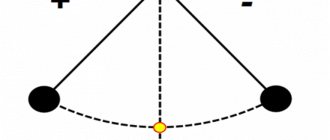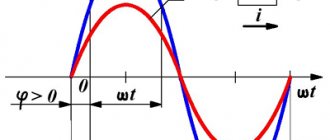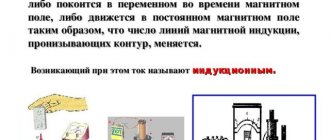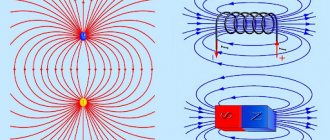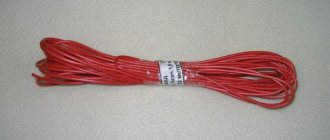ELECTROMAGNETIC RADIATION,
electromagnetic waves excited by various emitting objects - charged particles, atoms, molecules, antennas, etc. Depending on the wavelength, gamma radiation, X-rays, ultraviolet radiation, visible light, infrared radiation, radio waves and low-frequency electromagnetic oscillations are distinguished.
Also on topic:
LIGHT
It may seem surprising that outwardly such different physical phenomena have a common basis. Indeed, what do a piece of radioactive substance, an X-ray tube, a mercury discharge lamp, a flashlight bulb, a warm stove, a radio broadcast station, and an alternator connected to a power line have in common? As, indeed, between photographic film, the eye, a thermocouple, a television antenna and a radio receiver. However, the first list consists of sources, and the second - of receivers of electromagnetic radiation. The effects of different types of radiation on the human body are also different: gamma and X-ray radiation penetrate it, causing tissue damage, visible light causes a visual sensation in the eye, infrared radiation, falling on the human body, heats it, and radio waves and low-frequency electromagnetic vibrations affect the human body and are not felt at all. Despite these obvious differences, all these types of radiation are essentially different sides of the same phenomenon.
The interaction between the source and the receiver formally consists in the fact that with any change in the source, for example when it is turned on, some change is observed in the receiver. This change does not occur immediately, but after some time, and is quantitatively consistent with the idea that something moves from the source to the receiver at a very high speed. Complex mathematical theory and a huge variety of experimental data show that the electromagnetic interaction between a source and a receiver separated by a vacuum or rarefied gas can be represented in the form of waves propagating from the source to the receiver at the speed of light with
.
Also on topic:
X-RAYS
The speed of propagation in free space is the same for all types of electromagnetic waves, from gamma rays to low-frequency waves. But the number of oscillations per unit time (i.e. frequency f
) varies over a very wide range: from several vibrations per second for electromagnetic waves in the low-frequency range to 1020 vibrations per second in the case of X-ray and gamma radiation.
Since the wavelength (i.e., the distance between adjacent wave humps; Fig. 1) is given by the expression l = c
/
f
, it also varies widely - from several thousand kilometers for low-frequency oscillations to 10–14 m for X-ray and gamma-ray radiation. This is why the interaction of electromagnetic waves with matter is so different in different parts of their spectrum. And yet all these waves are related to each other, just as water ripples, waves on the surface of a pond and stormy ocean waves are related, which also have different effects on objects encountered along their path. Electromagnetic waves differ significantly from water waves and from sound in that they can be transmitted from a source to a receiver through a vacuum or interstellar space. For example, X-rays generated in a vacuum tube affect photographic film located far away from it, while the sound of a bell located under a hood cannot be heard if the air is pumped out from under the hood. The eye perceives rays of visible light coming from the Sun, and an antenna located on Earth perceives radio signals from a spacecraft millions of kilometers away. Thus, no material medium, such as water or air, is required for the propagation of electromagnetic waves.
Sources of electromagnetic radiation.
Despite physical differences, in all sources of electromagnetic radiation, be it a radioactive substance, an incandescent lamp or a television transmitter, this radiation is excited by accelerating electrical charges. There are two main types of sources. In “microscopic” sources, charged particles jump from one energy level to another within atoms or molecules. Emitters of this type emit gamma, x-ray, ultraviolet, visible and infrared, and in some cases even longer wavelength radiation (an example of the latter is the line in the spectrum of hydrogen corresponding to a wavelength of 21 cm, which plays an important role in radio astronomy). Sources of the second type can be called macroscopic. In them, free electrons of conductors perform synchronous periodic oscillations. The electrical system can have a wide variety of configurations and sizes. Systems of this type generate radiation in the range from millimeter waves to the longest waves (in power lines).
Gamma rays are emitted spontaneously when the nuclei of radioactive substances such as radium decay. In this case, complex processes of changes in the structure of the nucleus occur, associated with the movement of charges. Generated frequency f
is determined by the difference between the energies
E1
and
E2
of two states of the nucleus:
f =
(
E
1 –
E
2)/
h
, where
h
is Planck’s constant.
See also
CONSTANT BAR.
X-ray radiation occurs when the surface of a metal anode (anti-cathode) is bombarded in a vacuum by electrons with high speeds. Rapidly slowing down in the anode material, these electrons emit the so-called bremsstrahlung radiation, which has a continuous spectrum, and the restructuring of the internal structure of the anode atoms that occurs as a result of electron bombardment, as a result of which the atomic electrons pass into a state with lower energy, is accompanied by the emission of the so-called characteristic radiation, frequency which are determined by the anode material.
The same electronic transitions in an atom produce ultraviolet and visible light radiation. As for infrared radiation, it is usually the result of changes that have little effect on the electronic structure and are associated primarily with changes in the amplitude of vibrations and the angular momentum of the molecule.
Generators of electrical oscillations have an “oscillatory circuit” of one type or another, in which electrons perform forced oscillations with a frequency depending on its design and size. The highest frequencies, corresponding to millimeter and centimeter waves, are generated by klystrons and magnetrons - electric vacuum devices with metal volumetric resonators, oscillations in which are excited by electron currents. In lower frequency generators, the oscillating circuit consists of an inductor (inductance L
) and a capacitor (capacitance
C
) and is excited by a tube or transistor circuit. The natural frequency of such a circuit, which is close to resonant at low attenuation, is given by the expression.
Very low frequency alternating fields used to transmit electrical energy are created by electrical machine current generators in which rotors carrying wire windings rotate between the poles of magnets.
Radio streams
Due to the large value of the lengths, these waves can be considered without taking into account the atomistic structure of the medium. As an exception, only the shortest flows, which are adjacent to the infrared region of the spectrum, act. In the radio range, the quantum properties of vibrations appear rather weakly. Nevertheless, they must be taken into account, for example, when analyzing molecular time and frequency standards during cooling of equipment to a temperature of several kelvins.
Quantum properties are also taken into account when describing generators and amplifiers in the millimeter and centimeter ranges. The radio stream is formed during the movement of alternating current through conductors of the corresponding frequency. And a passing electromagnetic wave in space excites an alternating current corresponding to it. This property is used in the design of antennas in radio engineering.
Maxwell's theory, ether and electromagnetic interaction.
When an ocean liner passes at some distance from a fishing boat in calm weather, after some time the boat begins to sway violently on the waves. The reason for this is clear to everyone: from the bow of the liner, a wave runs along the surface of the water in the form of a sequence of humps and depressions, which reaches the fishing boat.
When, with the help of a special generator, oscillations of electric charge are excited in an antenna installed on an artificial Earth satellite and directed towards the Earth, an electric current is excited in the receiving antenna on Earth (also after some time). How is interaction transmitted from source to receiver if there is no material environment between them? And if the signal arriving at the receiver can be represented as some kind of incident wave, then what kind of wave is it that can propagate in a vacuum, and how can humps and depressions appear where there is nothing?
Scientists have been thinking about these questions as applied to visible light propagating from the Sun to the observer’s eye for a long time. Throughout most of the 19th century. physicists such as O. Fresnel, I. Fraunhofer, F. Neumann tried to find the answer in the fact that space is not actually empty, but is filled with a certain medium (“luminiferous ether”), endowed with the properties of an elastic solid. Although this hypothesis helped to explain some phenomena in a vacuum, it led to insurmountable difficulties in the problem of the passage of light through the boundary of two media, for example, air and glass. This prompted the Irish physicist J. McCullagh to discard the idea of elastic ether. In 1839, he proposed a new theory, which postulated the existence of a medium with properties different from all known materials. Such a medium does not resist compression and shear, but resists rotation. Because of these strange properties, McCullagh's model of the ether did not initially attract much interest. However, in 1847 Kelvin demonstrated the existence of an analogy between electrical phenomena and mechanical elasticity. Based on this, as well as from M. Faraday’s ideas about the lines of force of electric and magnetic fields, J. Maxwell proposed a theory of electrical phenomena, which, in his words, “denies action at a distance and attributes electrical action to stresses and pressures in some all-pervasive medium, moreover, these voltages are the same as those with which engineers deal, and the medium is precisely the medium in which light is supposed to propagate.” In 1864, Maxwell formulated a system of equations covering all electromagnetic phenomena. It is noteworthy that his theory was in many ways reminiscent of the theory proposed a quarter of a century earlier by McCullagh. Maxwell's equations were so comprehensive that the laws of Coulomb, Ampere, and electromagnetic induction were derived from them and the conclusion was drawn that the speed of propagation of electromagnetic phenomena coincides with the speed of light.
After Maxwell's equations were given a simpler form (thanks mainly to O. Heaviside and G. Hertz), field equations became the core of electromagnetic theory. Although these equations themselves did not require a Maxwellian interpretation based on ideas about stresses and pressures in the ether, such an interpretation was universally accepted. The undoubted success of the equations in predicting and explaining various electromagnetic phenomena was taken as a confirmation of the validity not only of the equations, but also of the mechanistic model on the basis of which they were derived and interpreted, although this model was completely insignificant for the mathematical theory. Faraday field lines and current tubes, along with deformations and displacements, became essential attributes of the ether. Energy was considered as stored in a tense environment, and its flow was presented by G. Poynting in 1884 as a vector, which now bears his name. In 1887, Hertz experimentally demonstrated the existence of electromagnetic waves. In a series of brilliant experiments, he measured their speed of propagation and showed that they could be reflected, refracted and polarized. In 1896, G. Marconi received a patent for radio communications.
In continental Europe, independently of Maxwell, the theory of long-range action developed - a completely different approach to the problem of electromagnetic interaction. Maxwell wrote on this subject: “According to the theory of electricity, which is making great progress in Germany, two charged particles directly act on each other at a distance with a force, which, according to Weber, depends on their relative speed and acts, according to a theory based on the ideas Gauss and developed by Riemann, Lorentz and Neumann, not instantly, but after some time, depending on the distance. The power of this theory, which explains any kind of electrical phenomena to such outstanding people, can only be truly appreciated by studying it.” The theory that Maxwell spoke about was most fully developed by the Danish physicist L. Lorentz with the help of scalar and vector retarded potentials, almost the same as in modern theory. Maxwell rejected the idea of delayed action at a distance, be it potentials or forces. “These physical hypotheses are completely alien to my ideas about the nature of things,” he wrote. However, Riemann and Lorentz's theory was mathematically identical to his, and he eventually agreed that the long-range theory had better evidence. In his Treatise on Electricity and Magnetism
(
Treatise on Electricity and Magnetism
, 1873) he wrote: “It should not be forgotten that we have taken but one step in the theory of the action of the medium. We suggested that she was in a state of tension, but we did not explain at all what this tension was and how it was maintained.”
In 1895, the Dutch physicist H. Lorentz combined the early limited theories of interaction between stationary charges and currents, which anticipated the theory of retarded potentials of L. Lorentz and were created mainly by Weber, with the general theory of Maxwell. H. Lorentz considered matter as containing electric charges, which, interacting with each other in various ways, produce all known electromagnetic phenomena. Instead of accepting the concept of delayed action at a distance, described by the delayed Riemann and L. Lorentz potentials, he proceeded from the assumption that the movement of charges creates an electromagnetic field
, capable of propagating through the ether and transferring momentum and energy from one system of charges to another. But is the existence of a medium such as ether necessary for the propagation of an electromagnetic field in the form of an electromagnetic wave? Numerous experiments designed to confirm the existence of the ether, including the “ether entrainment” experiment, gave negative results. Moreover, the hypothesis of the existence of the ether turned out to be in conflict with the theory of relativity and with the position of the constancy of the speed of light. The conclusion can be illustrated by the words of A. Einstein: “If the ether is not characterized by any specific state of motion, then it hardly makes sense to introduce it as a certain entity of a special kind along with space.”
Established EMR standards for humans
Every organ in our body vibrates. Thanks to vibration, an electromagnetic field is created around us, promoting the harmonious functioning of the whole organism. When our biofield is affected by other magnetic fields, this causes changes in it. Sometimes the body copes with the influence, sometimes it doesn’t. This causes deterioration in health.
Even a large crowd of people creates an electrical charge in the atmosphere. It is impossible to completely isolate yourself from electromagnetic radiation. There is an acceptable level of EMR, which is best not to exceed.
Here are the standards that are safe for health:
- 30-300 kHz, occurring at a field strength of 25 Volts per meter (V/m),
- 0.3-3 MHz, at a voltage of 15 V/m,
- 3-30 MHz – voltage 10 V/m,
- 30-300 MHz – voltage 3 V/m,
- 300 MHz-300 GHz – intensity 10 μW/cm2.
Gadgets, radio and television equipment operate at such frequencies.
Radiation and propagation of electromagnetic waves.
Electric charges moving with acceleration and periodically changing currents influence each other with certain forces. The magnitude and direction of these forces depend on such factors as the configuration and size of the region containing the charges and currents, the magnitude and relative direction of the currents, the electrical properties of the given medium, and changes in the concentration of charges and the distribution of source currents. Due to the complexity of the general formulation of the problem, the law of forces cannot be represented in the form of a single formula. The structure called the electromagnetic field, which can be considered a purely mathematical object if desired, is determined by the distribution of currents and charges created by a given source, taking into account boundary conditions determined by the shape of the interaction region and the properties of the material. When we are talking about unlimited space, these conditions are supplemented by a special boundary condition - the radiation condition
. The latter guarantees the “correct” behavior of the field at infinity.
The electromagnetic field is characterized by the electric field strength vector E
and the magnetic induction vector
B
, each of which at any point in space has a certain magnitude and direction.
In Fig. Figure 2 schematically shows an electromagnetic wave with vectors E
and
B
, propagating in the positive direction of the
x
. Electric and magnetic fields are closely interrelated: they are components of a single electromagnetic field, since they transform into each other during Lorentz transformations. A vector field is said to be linearly (plane) polarized if the direction of the vector remains fixed everywhere, and its length changes periodically. If the vector rotates, but its length does not change, then the field is said to have circular polarization; if the length of the vector changes periodically, and it itself rotates, then the field is called elliptically polarized.
The relationship between the electromagnetic field and the oscillating currents and charges that support this field can be illustrated with a relatively simple but very clear example of an antenna such as a half-wave symmetrical vibrator (Fig. 3). If a thin wire, the length of which is half the wavelength of the radiation, is cut in the middle and a high-frequency generator is connected to the cut, then the applied alternating voltage will maintain an approximately sinusoidal current distribution in the vibrator. At time t
= 0, when the current amplitude reaches its maximum value, and the velocity vector of positive charges is directed upward (negative charges are directed downward), at any point of the antenna the charge per unit length is zero.
After the first quarter of the period ( t
=
T
/4), positive charges will be concentrated on the upper half of the antenna, and negative charges on the lower.
In this case, the current is zero (Fig. 3, b
).
At the moment t
=
T
/2, the charge per unit length is zero, and the velocity vector of positive charges is directed downward (Fig. 3,
c
).
Then, by the end of the third quarter, the charges are redistributed (Fig. 3, d
), and at its completion the full period of oscillation ends (
t
=
T
) and everything again looks like in Fig.
3, a
.
In order for a signal (for example, the time-varying current driving a radio speaker) to be transmitted over a distance, the radiation from the transmitter must be modulated
by, for example, changing the amplitude of the current in the transmitting antenna in accordance with the signal, which will entail modulation of the amplitude of oscillations of the electromagnetic field (Fig. 4).
The transmitting antenna is that part of the transmitter where electric charges and currents oscillate, emitting an electromagnetic field into the surrounding space. The antenna can have a wide variety of configurations, depending on what shape of the electromagnetic field needs to be obtained. It can be a single symmetrical vibrator or a system of symmetrical vibrators located at a certain distance from each other and providing the necessary relationship between the amplitudes and phases of the currents. The antenna can be a symmetrical vibrator located in front of a relatively large flat or curved metal surface that acts as a reflector. In the range of centimeter and millimeter waves, an antenna in the form of a horn connected to a metal pipe-waveguide, which plays the role of a transmission line, is especially effective. Currents in the short antenna at the input of the waveguide induce alternating currents on its inner surface. These currents and the associated electromagnetic field propagate along the waveguide to the horn. see also
ANTENNA.
By changing the design of the antenna and its geometry, it is possible to achieve such a ratio of amplitudes and phases of current oscillations in its various parts so that the radiation is amplified in some directions and weakened in others (directional antennas).
At large distances from an antenna of any type, the electromagnetic field has a fairly simple form: at any given point the electric field strength vectors E
and the magnetic field induction
B
oscillates in phase in mutually perpendicular planes, decreasing in inverse proportion to the distance from the source.
In this case, the wave front has the shape of a sphere increasing in size, and the energy flow vector (Poynting vector) is directed outward along its radii. The integral of the Poynting vector over the entire sphere gives the total time-averaged emitted energy. In this case, waves propagating in the radial direction at the speed of light transfer from the source not only oscillations of the vectors E
and
B
, but also the momentum of the field and its energy.
Theories used in the study of properties
Today, there are various methods that facilitate the modeling and study of the manifestations and properties of oscillations. Quantum electrodynamics is considered the most fundamental of the tested and completed theories. From it, through certain simplifications, it becomes possible to obtain the methods listed below, which are widely used in various fields.
The description of relatively low-frequency radiation in a macroscopic environment is carried out using classical electrodynamics. It is based on Maxwell's equations. However, there are simplifications in applications. Optical study uses optics. The wave theory is used in cases where some parts of the optical system are close in size to wavelengths. Quantum optics is used when the processes of scattering and absorption of photons are significant.
Geometric optical theory is a limiting case in which the wavelength can be ignored. There are also several applied and fundamental sections. These include, for example, astrophysics, the biology of visual perception and photosynthesis, and photochemistry. How are electromagnetic waves classified? A table clearly depicting the distribution into groups is presented below.
Reception of electromagnetic waves and the phenomenon of scattering.
If a conducting cylinder is placed in the zone of an electromagnetic field propagating from a remote source, then the currents induced in it will be proportional to the strength of the electromagnetic field and, in addition, will depend on the orientation of the cylinder relative to the front of the incident wave and on the direction of the electric field strength vector. If the cylinder is in the form of a wire, the diameter of which is small compared to the wavelength, then the induced current will be maximum when the wire is parallel to the vector E
falling wave. If the wire is cut in the middle and a load is connected to the resulting terminals, then energy will be supplied to it, as is the case in the case of a radio receiver. The currents in this wire behave in the same way as the alternating currents in the transmitting antenna, and therefore it also emits a field into the surrounding space (i.e., the incident wave is scattered).
Visible threads
Ultraviolet and infrared visible radiation constitute, in the broad sense of the word, the so-called optical part of the spectrum. The selection of this area is determined not only by the proximity of the corresponding zones, but also by the similarity of the instruments used in the research and developed primarily during the study of visible light. These, in particular, include mirrors and lenses for focusing radiation, diffraction gratings, prisms and others.
The frequencies of optical waves are comparable to those of molecules and atoms, and their lengths are comparable to intermolecular distances and molecular sizes. Therefore, phenomena that are caused by the atomic structure of matter become significant in this area. For the same reason, light, along with wave properties, also has quantum properties.
Reflection and refraction of electromagnetic waves.
The transmitting antenna is usually installed high above the ground. If the antenna is located in a dry sandy or rocky area, then the soil behaves as an insulator (dielectric), and the currents induced in it by the antenna are associated with intra-atomic vibrations, since there are no free charge carriers, as in conductors and ionized gases. These microscopic vibrations create a field of electromagnetic waves reflected from the earth's surface above the earth's surface and, in addition, change the direction of propagation of the wave entering the soil. This wave moves at a lower speed and at a smaller angle to the normal than the incident one. This phenomenon is called refraction. If the wave falls on a section of the earth’s surface that, along with dielectric properties, also has conductive properties, then the overall picture for the refracted wave looks much more complicated. As before, the wave changes direction at the interface, but now the field in the ground propagates in such a way that surfaces of equal phases no longer coincide with surfaces of equal amplitudes, as is usually the case with a plane wave. In addition, the amplitude of wave oscillations quickly decays, since conduction electrons give up their energy to atoms during collisions. As a result, the energy of wave oscillations turns into the energy of chaotic thermal motion and is dissipated. Therefore, where the soil conducts electricity, waves cannot penetrate it to great depths. The same applies to sea water, which makes radio communication with submarines difficult.
In the upper layers of the earth's atmosphere there is a layer of ionized gas called the ionosphere. It consists of free electrons and positively charged ions. Under the influence of electromagnetic waves sent from the earth, charged particles of the ionosphere begin to oscillate and emit their own electromagnetic field. Charged ionospheric particles interact with the sent wave in approximately the same way as dielectric particles in the case discussed above. However, the electrons of the ionosphere are not associated with atoms, as in a dielectric. They react to the electric field of the sent wave not instantly, but with some phase shift. As a result, the wave in the ionosphere propagates not at a smaller angle, as in a dielectric, but at a larger angle to the normal than the incident wave sent from the earth, and the phase velocity of the wave in the ionosphere turns out to be greater than the speed of light c
. When the wave falls at a certain critical angle, the angle between the refracted ray and the normal becomes close to a straight line, and with a further increase in the angle of incidence, the radiation is reflected towards the Earth. Obviously, in this case, the electrons of the ionosphere create a field that compensates for the field of the refracted wave in the vertical direction, and the ionosphere acts as a mirror.
Schematic of Hertz's experiment
Registration of radiation was carried out using a receiving vibrator. This device had the same design as the emitting device. Under the influence of an electromagnetic wave of an electric alternating field, a current oscillation was excited in the receiving device. If in this device its natural frequency and the frequency of the flow coincided, then resonance appeared. As a result, disturbances in the receiving device occurred with greater amplitude. The researcher discovered them by observing sparks between the conductors in a small gap.
Thus, Hertz became the first to discover electromagnetic waves and prove their ability to be reflected well from conductors. He practically substantiated the formation of standing radiation. In addition, Hertz determined the speed of propagation of electromagnetic waves in air.
Energy and impulse of radiation.
In modern physics, the choice between Maxwell's theory of electromagnetic field and the theory of delayed long-range action is made in favor of Maxwell's theory. As long as we are only interested in the interaction between source and receiver, both theories are equally good. However, the theory of long-range action does not give any answer to the question of where the energy is located that the source has already emitted, but has not yet received by the receiver. According to Maxwell's theory, the source transmits energy to the electromagnetic wave, in which it remains until it is transferred to the receiver that absorbs the wave. At the same time, the law of conservation of energy is observed at each stage.
Thus, electromagnetic waves have energy (as well as momentum), which makes them considered as real as, for example, atoms. Electrons and protons found in the Sun transfer energy to electromagnetic radiation, mainly in the infrared, visible and ultraviolet regions of the spectrum; After about 500 seconds, having reached the Earth, it releases this energy: the temperature rises, photosynthesis occurs in the green leaves of plants, etc. In 1901, P.N. Lebedev experimentally measured the pressure of light, confirming that light has not only energy, but also momentum (and the relationship between them is consistent with Maxwell’s theory).
Experimental detection
Maxwell's theory was confirmed by Hertz's experiments in 1888. It should be said here that the German physicist conducted his experiments to disprove the theory, despite its mathematical justification. However, thanks to his experiments, Hertz became the first to practically discover electromagnetic waves. In addition, during his experiments, the scientist identified the properties and characteristics of the radiation.
Hertz obtained electromagnetic oscillations and waves by exciting a series of pulses of a rapidly varying flow in a vibrator using a high voltage source. High frequency currents can be detected using a circuit. The higher the capacitance and inductance, the higher the oscillation frequency will be. But at the same time, a high frequency does not guarantee an intense flow. To conduct his experiments, Hertz used a fairly simple device, which today is called the “Hertz vibrator.” The device is an open type oscillatory circuit.
The emergence of optical flows
The most famous source is the Sun. The star's surface (photosphere) has a temperature of 6000° Kelvin and emits bright white light. The highest value of the continuous spectrum is located in the “green” zone - 550 nm. This is also where the maximum visual sensitivity is located. Oscillations in the optical range occur when bodies are heated. Infrared flows are therefore also called thermal flows.
The more the body heats up, the higher the frequency where the maximum of the spectrum is located. With a certain increase in temperature, incandescence (glow in the visible range) is observed. In this case, red appears first, then yellow, and so on. The creation and recording of optical flows can occur in biological and chemical reactions, one of which is used in photography. For most creatures living on Earth, photosynthesis serves as a source of energy. This biological reaction occurs in plants under the influence of optical solar radiation.
